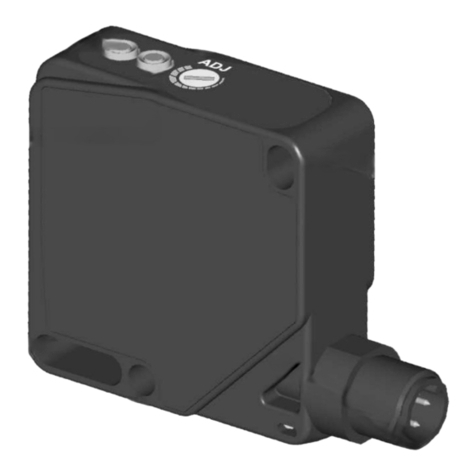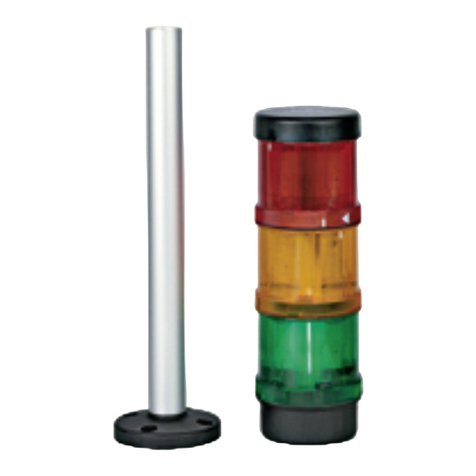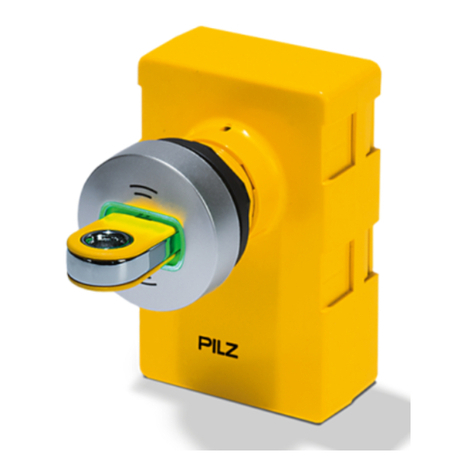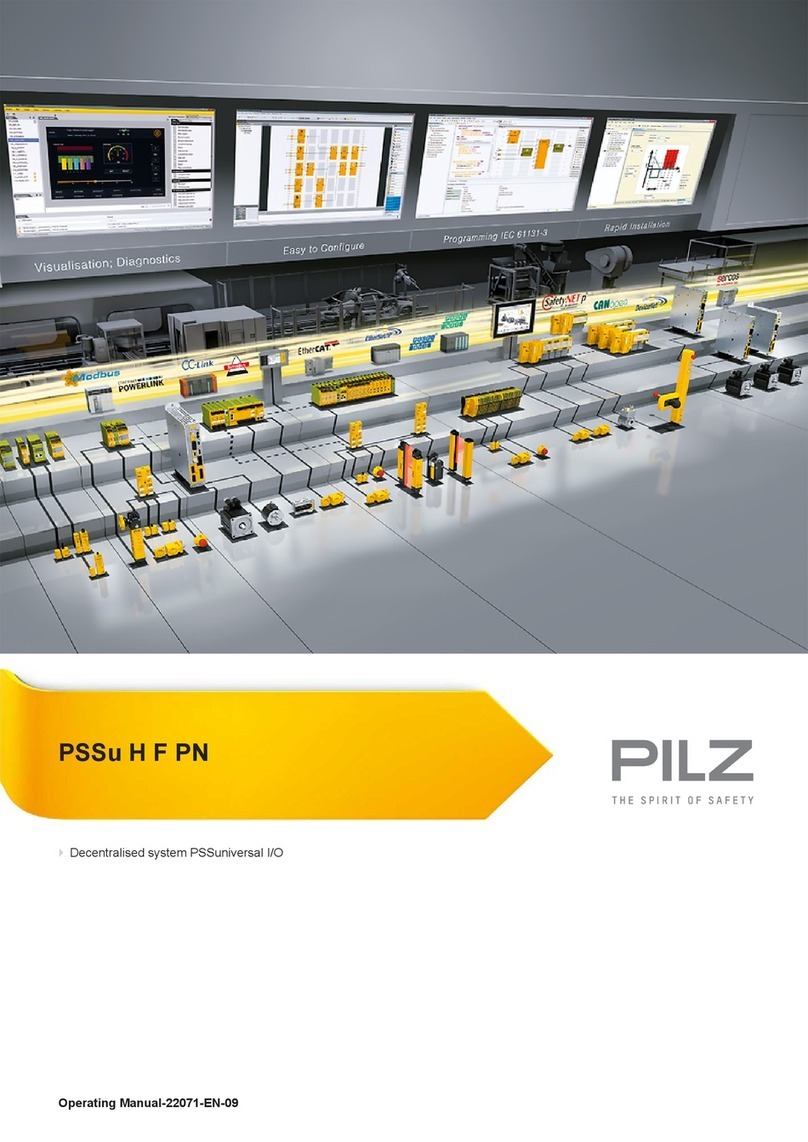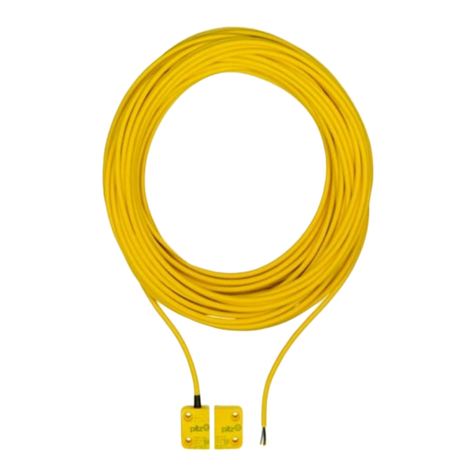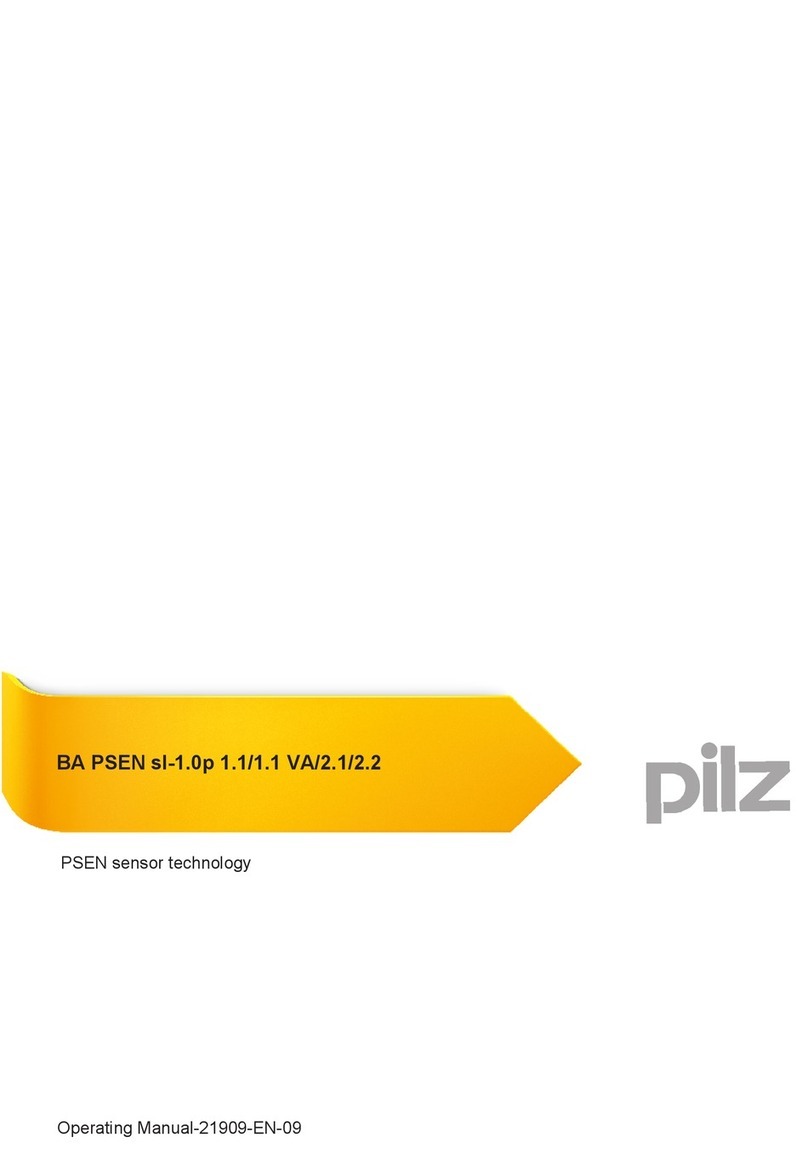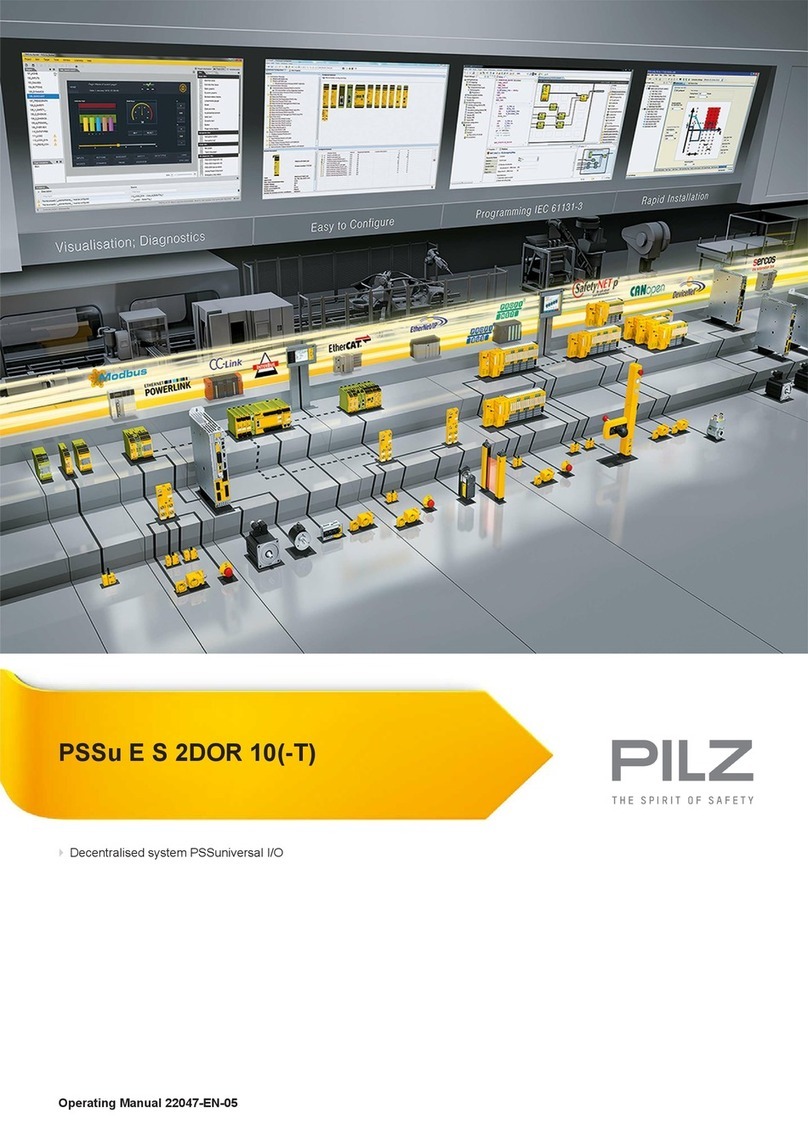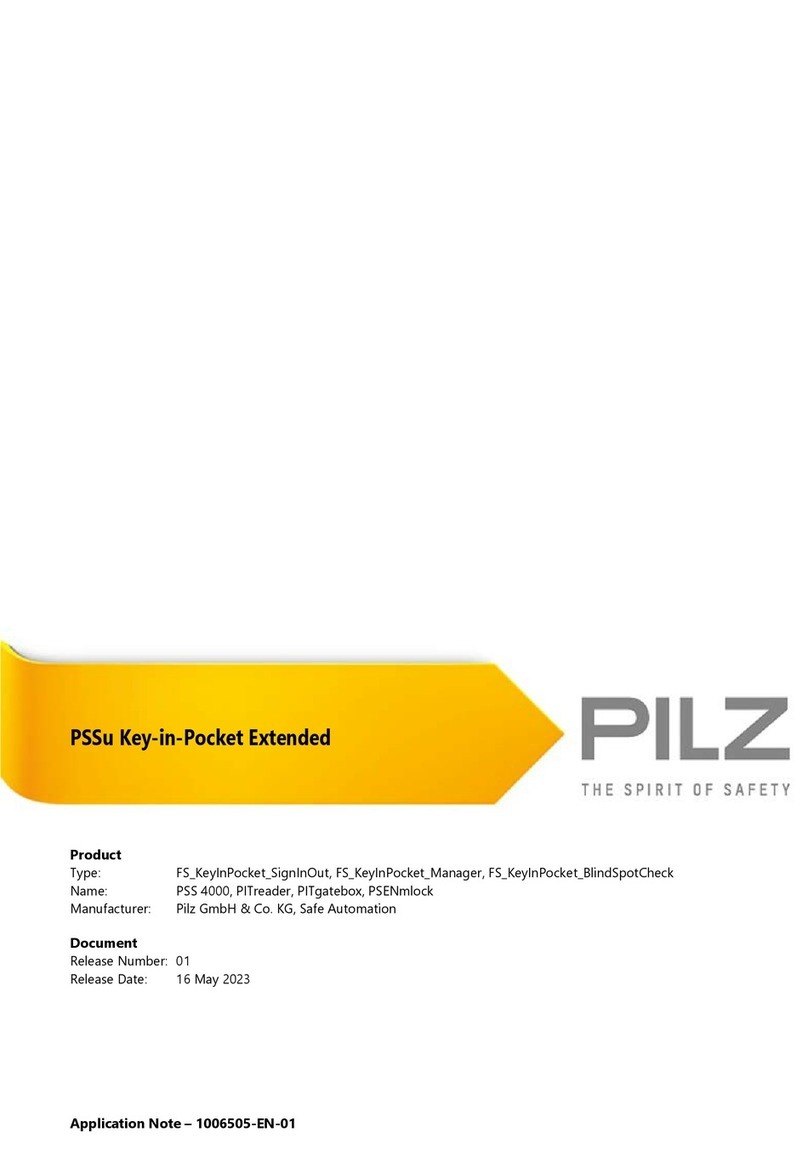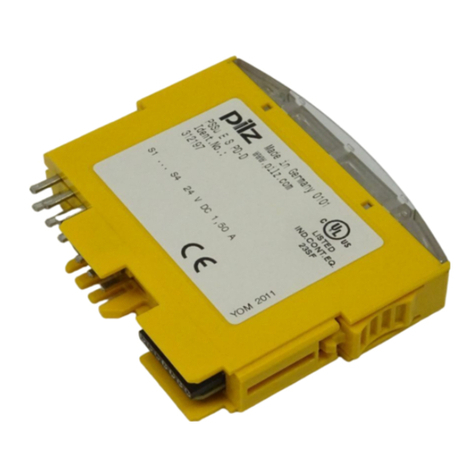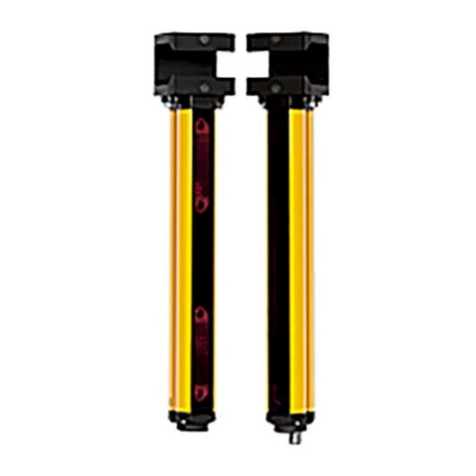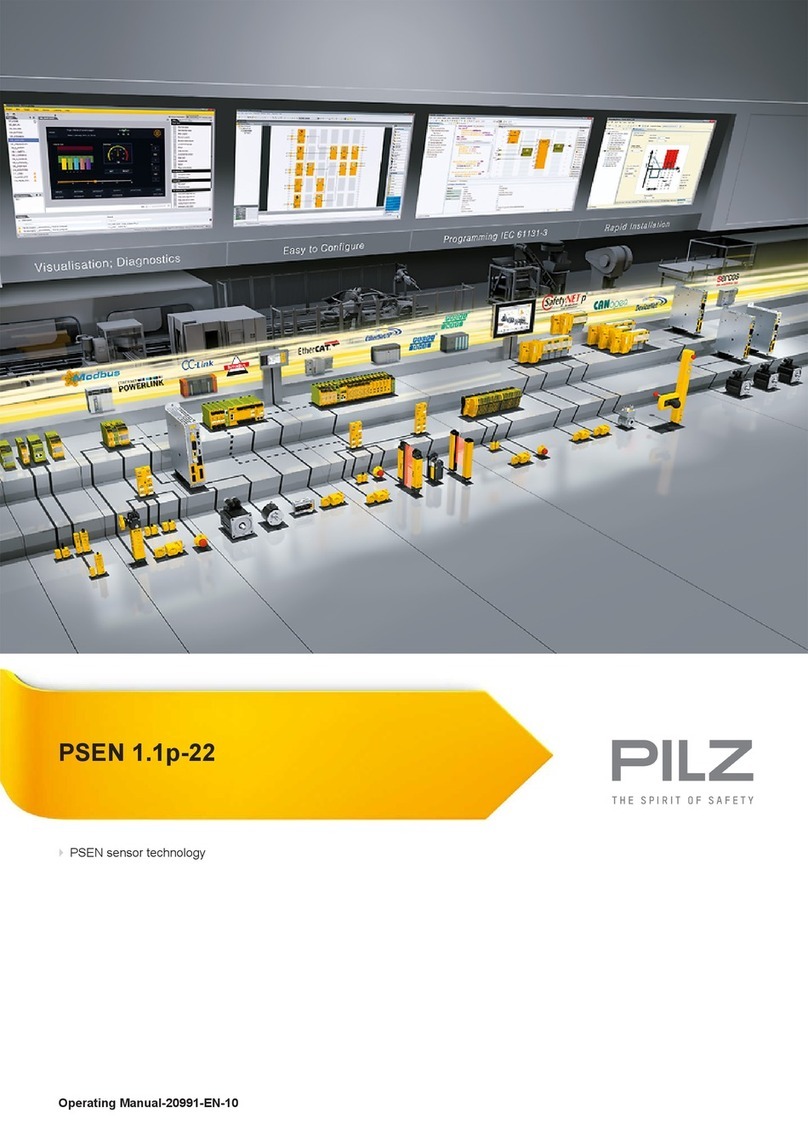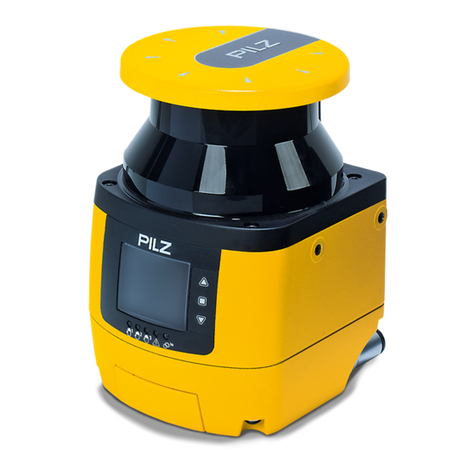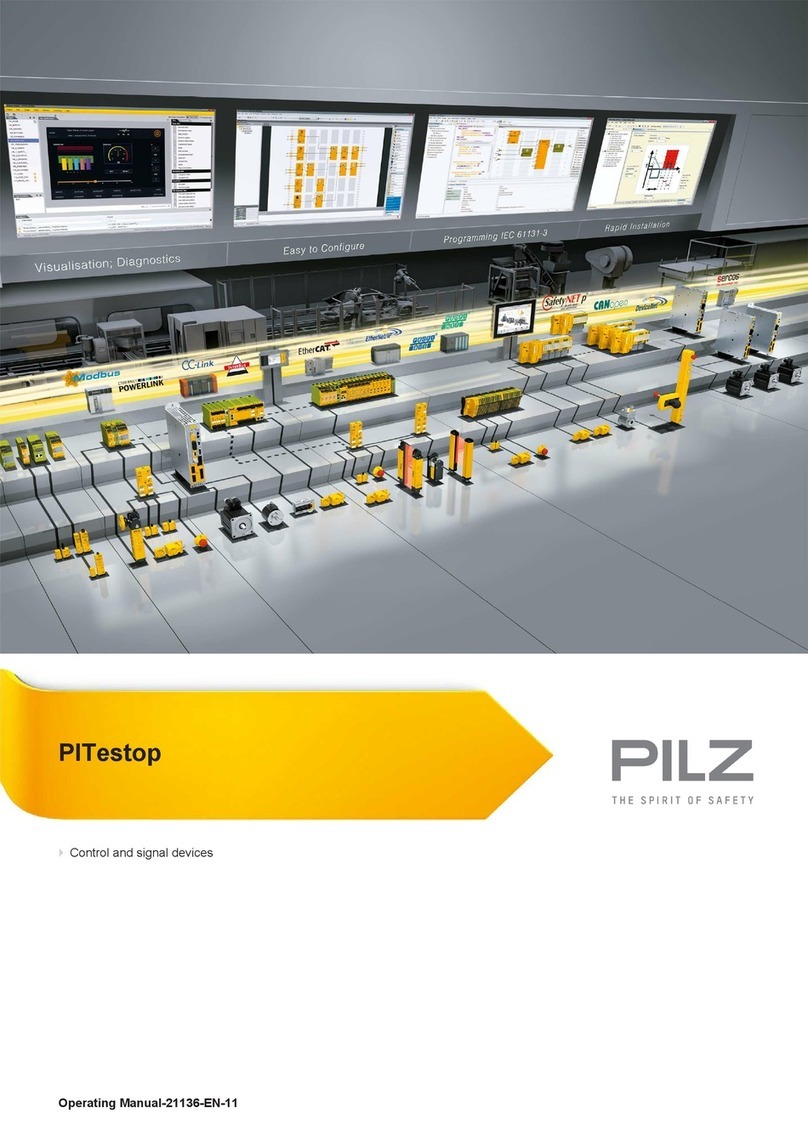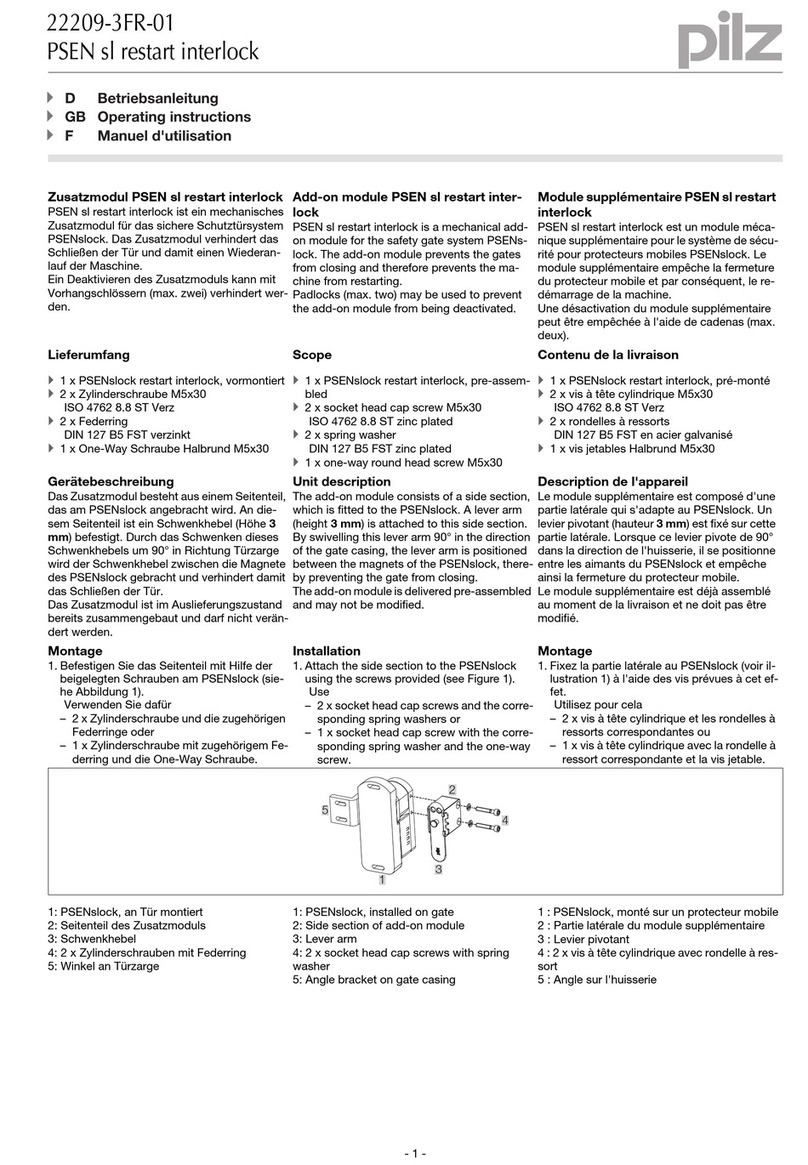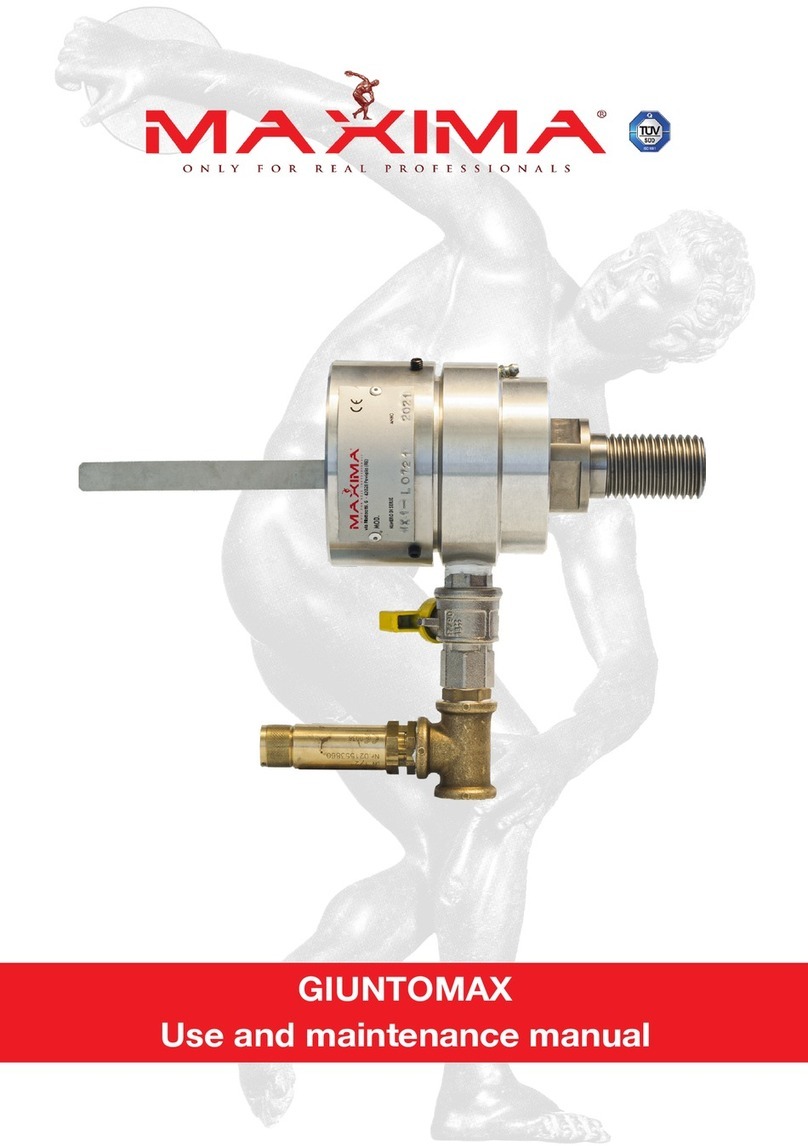
• Réarmement manuel : le relais n’est
activé qu’après une impulsion sur un
poussoir de validation. Un réarmement
automatique du relais après une coupure
d’alimentation est ainsi impossible.
• Augmentation du nombre de contacts ou
du pouvoir de coupure par l’utilisation de
contacteurs externes.
• Manual reset: Unit is only active when a
start button has been pressed. Automatic
reset following a loss/return of supply
voltage is thereby prevented.
• Increase in the number of available
contacts by connection of external
contactors/relays.
• Manueller Start: Gerät ist erst dann aktiv,
wenn ein Starttaster betätigt wird.
Dadurch ist ein automatischer Start des
Schaltgeräts nach Spannungsausfall und
-wiederkehr ausgeschlossen.
• Kontaktvervielfachung und -verstärkung
durch Anschluß von externen Schützen.
Montage
Le relais doit être monté dans l'armoire
électrique ayant au min. un indice de
protection IP 54. Sa face arrière permet un
montage sur rail DIN.
Mise en oeuvre
Remarques préliminaires :
• Seuls les contacts 13-14,23-24 et 33-34
sont des contacts de sécurité. Le contact
41-42 est un contact d’information (ex.
voyant)
• Protection de contacts de sortie par des
fusibles 10A rapides ou 6,3 A normaux
pour éviter leur soudage
• Longueurs de câblage max. (circuits
d’entrée) Préalable:
câble: 2 x 1,5 mm2
capacité : 150 nF/Km
résistivité : 28 Ohm/Km
température : 25 °C
DC: résistivité max. 100 Ohm : 3,5 Km
AC: résistivité max. 200 Ohm : 7,2 Km
Valeurs indiquées pour une commande
par 2 canaux. En cas de commande par 1
canal, la moitié des valeurs est valable.
• Pour les relais AC, le branchement
d’utilisateurs supplémentaires sur les
canaux d’entrée est impossible. Pour les
relais DC, utilisateurs supplém. avec max.
400 mA.
• Utiliser uniquement des fils de cablâge en
cuivre 60/75 °C.
• Le couple de serrage sur les bornes de
racordement ne doît pas dépasser
1,2 Nm.
• Respecter les données indiquées dans le
chap. „Caractéristiques techniques“.
Mise en oeuvre :
• Amener la tension d’alimentation sur A1
et A2
- DC : borne A2 à relier au „-“
- AC : relier la borne terre
• Boucle de retour
Pontage de X1-X2 ou branchement des
contacts externes
• Circuit de réarmement
- Réarmement automatique: pontage des
bornes T33-T34
- Réarmement manuel: câblage d’un
poussoir sur T33-T34 (pas de pontage)
• Circuits d’entrée
- Commande par 1 canal : câblage du
contact à ouverture entre T11 et T12,
pontage de T12 et T22
- Commande par 2 canaux : câblage des
contacts à ouverture entre T11-T12/
T11-T22 (pas de pont entre T12-T22)
Les contacts de sortie se ferment et le
contact d’information 41-42 s’ouvre. Les
LEDs de visualisation des canaux 1 et 2 sont
allumées. L’appareil est prêt à fonctionner.
Si le circuit d’entrée est ouvert, les contacts
de sortie retombent et le contact
d’information 41-42 se ferme. Les LEDs
s’éteignent.
Installation
The safety relay must be panel mounted
(min. IP 54). There is a notch on the rear of
the unit for DIN-Rail attachment.
Operation
Please note for operation:
• Only the output contacts 13-14/23-24/33-
34 are safety contacts. Output contact
41-42 is a signal contact (e.g. for a
display).
• To prevent a welding together of the
contacts, a fuse (10 A quick/6.3 A slow
acting) must be connected before the
output contacts.
• Cable runs:
Cable 2 x 1.5 mm2
Capacitance 150 nF/km
Resistance 28 Ohm/km
Temperature + 25 °C
Max. length (Input circuit):
DC/100 Ohm cable resistance: 3.5 km
AC/200 Ohm cable resistance: 7.2 km
Values for two-channel wiring; For single-
channel wiring, values should be halved.
• When your external device (limit switch
etc.) has a current consumption, with DC
units this must not exceed 400 mA. With
AC units no load is permitted.
• Use copper wiring that will withstand
60/75 °C.
• Tighten terminals to 1.2 Nm.
• Important details in the section "Technical
Data“ should be noted and adhered to.
To operate:
• Supply operating voltage to terminals A1
(+) and A2 (-).
- DC: Connect terminal A2 (-) with the
earthed side of the operating voltage.
- AC: Connect the operating earth
terminal with the ground earth.
• Feedback control loop
Bridge X1 - X2 or connect external
contactors/relays.
• Reset circuit
- Automatic reset: Bridge T33 - T34.
- Manual reset: Connect button on T33 -
T34 (no bridge on T33 - T34).
• Input circuit
- Single-channel: Bridge T12 - T22.
Connect N/C contact from trigger
element (e.g. E-Stop) to T12 and T11
- Two-channel: Connect N/C contact from
trigger element (e.g. E-Stop) to T11 -
T12/T11 - T22 (no bridge at T12 - T22).
The safety contacts are activated (closed)
and the signal contact (41 - 42) is open. The
status indicators from channel 1 and channel
2 are illuminated. The unit is ready for
operation.
If the input circuit is opened, the safety
contacts 13-14/23-24/33-34 open and the
signal contact 41-42 closes. The status
indicator goes out.
Montage
Das Sicherheitsschaltgerät muß in einen
Schaltschrank mit einer Schutzart von mind.
IP 54 eingebaut werden. Zur Befestigung
auf einer Normschiene dient ein Rast-
element auf der Rückseite des Geräts.
Inbetriebnahme
Beachten Sie bei der Inbetriebnahme:
• Nur die Ausgangskontakte 13-14/23-24/
33-34 sind Sicherheitskontakte. Aus-
gangskontakt 41-42 ist ein Hilfskontakt
(z. B. für Anzeige).
•Vor die Ausgangskontakte eine
Sicherung (10 A flink oder 6,3 A träge)
schalten, um das Verschweißen der
Kontakte zu verhindern.
• Max. Leitungslängen (Eingangskreis):
Voraussetzungen:
Leiterquerschnitt: 2 x 1,5 mm2
Kapazität: 150 nF/km
Widerstand: 28 Ohm/km
Temperatur: +25 °C
DC/100 Ohm Leitungswiderstand: 3,5 km
AC/200 Ohm Leitungswiderstand: 7,2 km
Werte gelten für zweikanalige Beschal-
tung, für einkanalige Beschaltung gelten
die halben Werte.
• Bei AC-Geräten kann kein zusätzlicher
Verbraucher verwendet werden. Bei DC-
Geräten zusätzliche Verbraucher mit max.
400 mA.
• Leitungsmaterial aus Kupferdraht mit einer
Temperaturbeständigkeit von 60/75 °C
verwenden.
• Das Anzugsdrehmoment der Schrauben
auf den Anschlußklemmen darf max.
1,2 Nm betragen.
• Angaben im Kapitel „Technische Daten“
unbedingt einhalten.
Ablauf:
• Betriebsspannung an Klemmen A1 (+) und
A2 (-) anlegen.
- DC: Klemme A2 (-) mit geerdeter Seite
der Betriebsspannung verbinden.
- AC: Betriebserdungsklemme mit
Schutzleitersystem verbinden.
• Rückführkreis
Brücke an X1-X2 oder externe Schütze
anschließen.
• Startkreis
- Automatischer Start: T33-T34 brücken.
- Manueller Start: Taster an T33-T34
anschließen (keine Brücke an T33-T34).
• Eingangskreis
- einkanalig: T12-T22 brücken. Öffner-
kontakt von Auslöselement an T12 und
T11 anschließen.
- zweikanalig: Öffnerkontakt von Auslöse-
element an T11-T12/T11-T22 anschlie-
ßen (keine Brücke an T12-T22).
Die Sicherheitskontakte sind aktiviert
(geschlossen) und der Hilfskontakt (41-42)
ist geöffnet. Die Statusanzeigen von Kanal 1
und Kanal 2 leuchten. Das Gerät ist
betriebsbereit.
Wird der Eingangskreis geöffnet, öffnen die
Sicherheitskontakte 13-14/23-24/33-34 und
der Hilfskontakt 41-42 schließt. Die
Statusanzeige erlischt.

